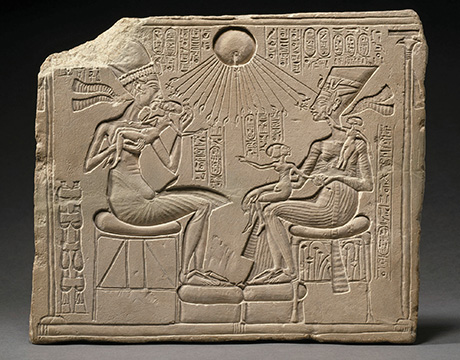Image Details

NATIONAL MUSEUMS IN BERLIN, EGYPTIAN MUSEUM AND PAPYRUS COLLECTION/MARGARETE BÜSING, CC BY-SA 4.0
AKHENATEN’S CAPITAL CITY. The Amarna Letters span a period of about 30 years, beginning near the end of Amenhotep III’s reign and continuing through that of his son Akhenaten (roughly 1360–1335 BCE). The nearly 400 tablets discovered at Akhenaten’s capital city of Akhetaten (Tell el-Amarna) in Middle Egypt provide a crucial window into Egypt’s relationships with the other great empires and, even more frequently, the many Canaanite polities that were Egyptian vassals. Some of the scribes who wrote the letters were well versed in life at the Egyptian court; for example, some even knew of Akhenaten’s famous religious reforms, which placed the sun-god Aten at the head of the Egyptian pantheon. The limestone relief above, characteristic of Amarna-period Egyptian art, shows an ideologically charged family scene with Akhenaten, his wife Nefertiti, and their three daughters receiving life and sustenance from Aten’s rays.
